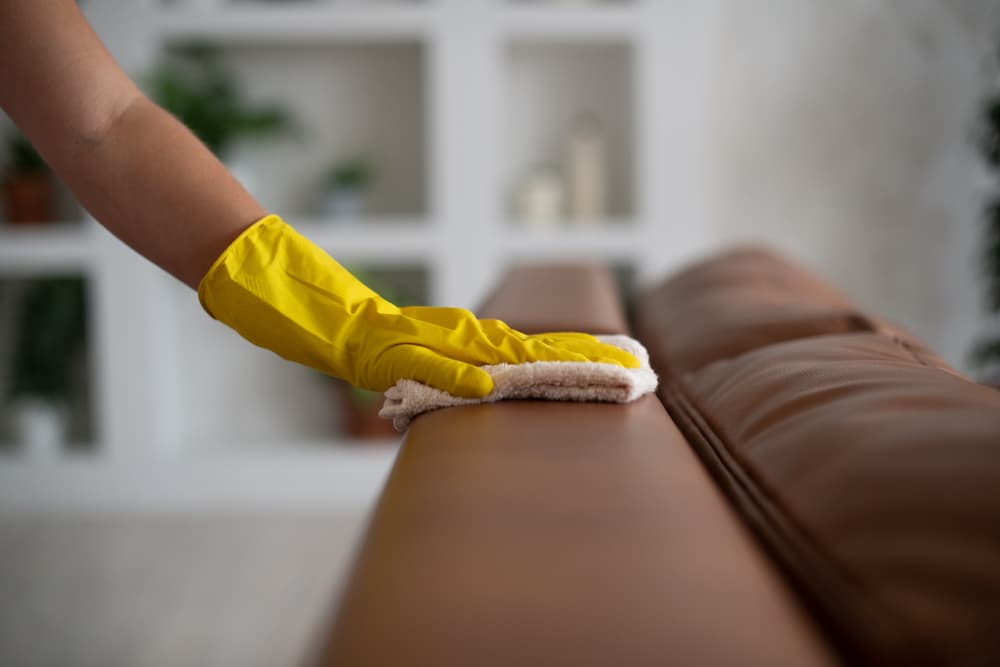Proper leather furniture care is essential for maintaining the luxury, durability, and elegance of hotel interiors. Hotels invest in high-end leather furniture to create a sophisticated atmosphere, but without proper hotel leather furniture maintenance, leather can dry out, crack, or fade over time.
This guide covers best practices for leather furniture care, including cleaning techniques, conditioning tips, and professional maintenance to keep hotel leather furnishings in pristine condition for years.
Table of Contents
Toggle- Essential Leather Furniture Care Tips for Hotels
- Final Thoughts on Leather Furniture Care for Hotels
- The Advantages of Custom Luxury Hotel Furniture
- The Importance of Custom Hotel Furniture in Enhancing Guest Experience
- The Ultimate Guide to Finding Top Hotel Furniture Suppliers in Turkey
- Importance of High Quality Furniture in Hotels
- The Impact of Furniture Design on Hotel Guest Experience
- High Quality Furniture in Hotels: Essential for Guests
- The Role of Furniture in Defining Hotel Aesthetics
- The Evolution of Hotel Furniture Design Over the Years
- How to Choose the Right Upholstery for Hotel Furniture
- The Impact of Furniture Design on Guest Experience in Hotels
- Hotel Furniture and Design: Enhancing the Guest Experience
- Premium Hotel Furniture in Turkey: Elevate Your Hotel’s Interior Design
- How Do Hotels Get Furniture in the Rooms | Hotel Solutions
- Hotel Furniture Concept | Perfect Products for Your Hotel
- Top 5 Benefits of Turkish Made Hotel Furniture
- What makes a good faux leather?
- Furnishing an Apartment: 6 Tips for Choosing the Best Furniture
- Types Of Hotel Furniture You Need
- Why Turkish Made Hotel Furniture is the Best Choice for Your Business
- What is fixed furniture?
- Maximizing Your Hotels ROI with High-Quality Furniture Solutions
- Benefits of Custom Made Furniture
- Hotel Furniture Buying Guide
- Where Do I Buy Hotel Furniture in Turkey?
- How to Make a Hotel Room Feel Like Home
- How Often Do Hotels Change Their Interiors?
- A Good Hotel Furniture Manufacturer
- 7 Signs Your that Hotel Needs Renovation
- What Factors Will Affect Hotel Furniture Prices?
- Should I Buy Laminate or Veneer Furniture?
- MDF Cutting Machine
- What are the Basic Furniture Required to Set Up a Hotel?
- What is Crib 5?
- Four Ways to Maintain Hotel Room Storage
- Characteristics of a Custom Hotel Furniture
- Popular Materials for Luxury Hotel Furniture Manufacture
- The Four Characteristics of a Hotel Furniture Design
- 4 Key Considerations for Hotel Furniture
- Hospitality Design Mistakes That Are Common
- Hotel Furniture Quality Control Checklist
- Things Your Hotel Furniture Manufacturer Should Provide
- Why we use 3D Renderings in Furniture Design
- Advantages of Custom Hotel Furnitures
- Important Questions to Ask a Potential Hotel Furniture Supplier
- What Are the Guides to Contract Furniture?
- Things to Consider When Choosing a Hotel Furniture Manufacturer
- Wood Veneers and Laminate Casegoods
- Wooden Furniture Care
- What Types Of Wood Are The Best For Your Luxury Sofa?
- Hotel Furniture Cushion Upholstery Care
- Ten Tips for Hotel Lobby Design
- Starland Hotel Cameroon
- Hotel Furniture Turkey
- The Best Hotel Furniture Suppliers
- Hotel Furniture Manufacturers in Turkey
- Four Mistakes While Buying a Restaurant Furniture in Turkey 2021
- Selecting Booth and Sofa Seating Made in Turkey
- 10 Restaurant And Cafe Furniture Ideas From Turkey
- Five Most important Materials in Hotel Furniture Industry
- Hotel Renovations: Luxury Hospitality Furnishings made in Turkey
- How to Maintain Hotel Furniture for 10+ Years
- Commercial VS Residential Furniture Made in Turkey
- Hotel Furniture Manufacturing Industry in Turkey
Essential Leather Furniture Care Tips for Hotels
1. Why Is Leather Furniture Care Important?
Leather furniture adds luxury and sophistication to hotel lobbies, guest rooms, and lounges. However, without proper leather furniture protection tips, it can suffer from:
Cracking and peeling due to dryness.
Staining from spills and improper cleaning.
Fading from prolonged sun exposure.
Loss of softness and suppleness over time.
Regular leather furniture care ensures that hotel leather sofas, chairs, and headboards remain elegant and long-lasting.
2. How to Clean Leather Furniture in Hotels
Regular cleaning of leather hotel furniture prevents dirt buildup, extends lifespan, and enhances comfort. Follow these steps to ensure hotel leather furniture maintenance is done correctly:
Daily & Weekly Leather Cleaning Routine
Dust leather surfaces with a soft microfiber cloth.
Use a damp cloth to wipe away surface dirt.
Apply a pH-balanced leather cleaner every week.
Removing Common Stains from Leather Upholstery
| Type of Stain | Cleaning Method |
|---|---|
| Water Stains | Blot immediately with a dry cloth. |
| Ink Marks | Use rubbing alcohol on a cotton swab. |
| Grease Stains | Sprinkle baking soda, then wipe clean. |
| Food Spills | Wipe gently with mild soap and water. |
By following these cleaning leather hotel furniture techniques, hotels can preserve the appearance and quality of their furnishings.
3. Leather Furniture Conditioning for Longevity
To prevent leather drying and cracking, regular conditioning is crucial. Proper leather furniture conditioning keeps hotel sofas and chairs soft and supple.
Use a leather conditioner every 3-6 months to maintain moisture.
Avoid silicone-based products that can damage the leather’s surface.
Test the conditioner on a small area first to ensure compatibility.
Luxury leather furniture care requires consistent conditioning and hydration to retain its premium appearance.
4. Protecting Leather Furniture from Damage
Hotels must take preventative measures to extend the life of leather furniture.
Keep leather furniture away from direct sunlight to prevent fading.
Use leather protectant sprays to repel stains and moisture.
Encourage guests to avoid sharp objects that may scratch the surface.
Implementing these leather furniture protection tips helps maintain a flawless and high-end look in hotel spaces.
5. Professional Leather Furniture Maintenance Services
Hotels should schedule professional leather furniture maintenance at least once a year to deep clean and restore worn-out leather surfaces.
Benefits of Professional Cleaning:
Removes deep-set dirt and oils.
Restores leather’s natural shine and softness.
Extends the life of leather sofas and chairs.
By combining regular cleaning with professional maintenance, hotels can ensure hotel leather furniture stays in top condition.
Final Thoughts on Leather Furniture Care for Hotels
Investing in proper leather furniture care enhances durability, elegance, and comfort in hotels. By following hotel leather furniture maintenance routines, conditioning treatments, and protection strategies, hotels can extend the life of their leather furniture while maintaining a luxurious atmosphere.
Regular cleaning prevents dirt buildup.
Conditioning keeps leather soft and prevents cracks.
Protection techniques reduce wear and tear.
Professional maintenance ensures long-term quality.
With these leather furniture protection tips, hotels can ensure their leather furnishings remain pristine, stylish, and long-lasting.



